This is part of a series of posts describing my experiences with different species, their culture requirements, and photos of their growth in my collection. The full series can be read here, or by species at the Series page.
Drosera allantostigma is a pygmy sundew from Western Australia, and is one of the most delicately lovely sundews I grow.
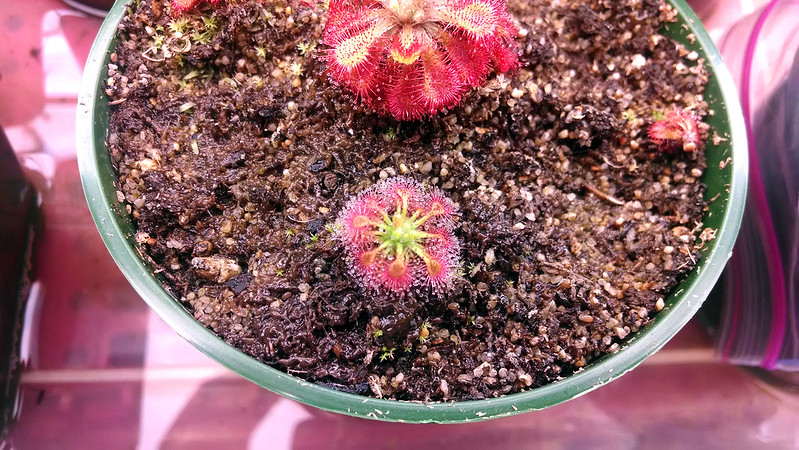 |
| D. allantostigma on 4-11-14. I know I refer to sundews as "gem-like" a lot, but this one definitely deserves it. |
It has narrow petioles of pale green, nearly round laminae with strikingly red tentacles, and is roughly the size of a penny. When mature it supports lots of active leaves – mine has more than 12, maybe as many as 16 – which makes it almost perfectly round. It's really beautiful.
I got this plant by accident, when I won a mystery sundew (which later turned out to be
D. aliciae) at the winter BACPS meeting. The
D. allantostigma was wedged up against the
D. aliciae, along with a
D. tokaiensis and a couple of seedlings.
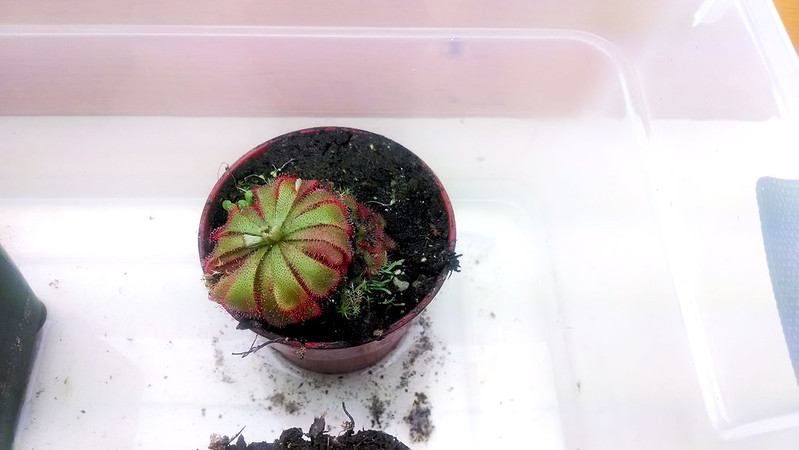 |
| This pot of mystery plants was my best acquisition at the winter BACPS meeting. |
Luckily, I didn't know that one of the sundews in there was a pygmy, or I would have worried too much about repotting – conventional wisdom states that pygmies hate having their roots disturbed, and that repotting frequently leads to death. I guess I got lucky, because my plant handled the disturbance with grace, and has been growing easily ever since, although I hope I can avoid repotting it again.
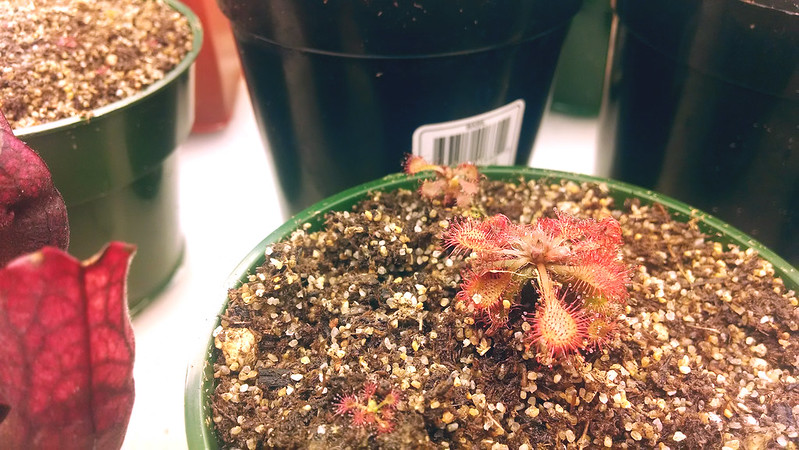 |
| D. allantostigma on 2-15-14, shortly after repotting. Tiny! |
Being a pygmy sundew,
D. allantostigma will (hopefully) produce gemmae in the autumn, which I intend to harvest and sow. I understand the plant requires seasonal cues for this, but perhaps being by the window and getting daylight light color changes will be enough. If not, I fully intend to track down some gemmae from other growers.
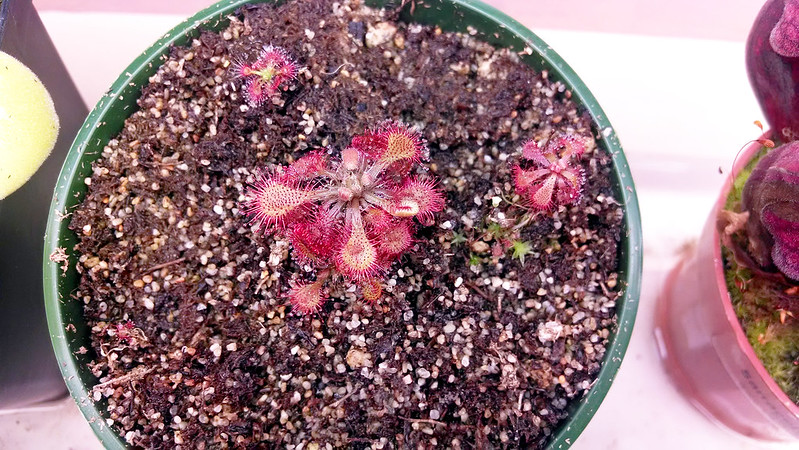 |
| 3-1-14, now clearly distinct from the other residents of the pot. |
Pygmy sundews do not have particularly stringent growing requirements. My
D. allantostigma is sharing a pot with
D. tokaiensis and
D. aliciae, two famously weedy beginner species, and is doing at least as well, if not better, than they are. I understand that particularly high temperatures can lead to dormancy, but I'm unlikely to see that in my conditions, unless we have a really surprising heatwave. It's a large tray, so the humidity is decent, but not super high (I need to get a hygrometer). The media is a standard 1:1 peat:sand mix, and the lights are on 16 hours a day.
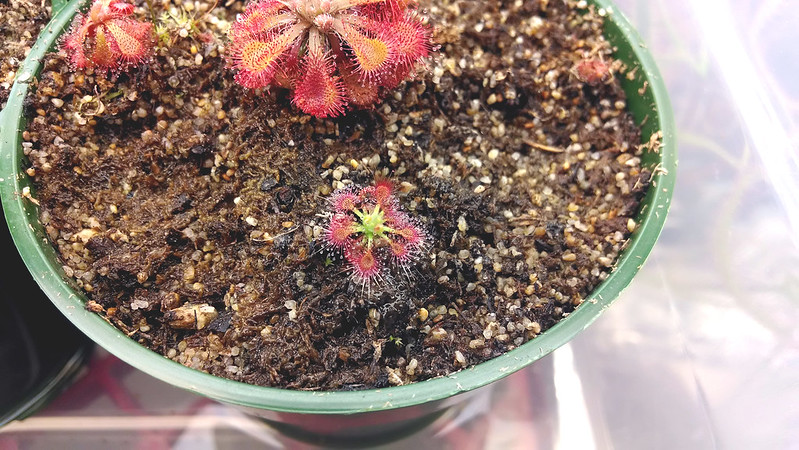 |
| D. allantostigma, 3-15-14. Some of its most attractive features, like the extra long tentacles at the tips, are becoming visible. |
I highly recommend this species to new growers. When I first got it in January it was small enough to be almost indistinguishable from the other seedlings in the pot, so I presume it was recently sown as a gemma. Five months of hands-off cultivation and steady growth later, and it's one of the most delightful plants in my collection. It's also really cute when fed.
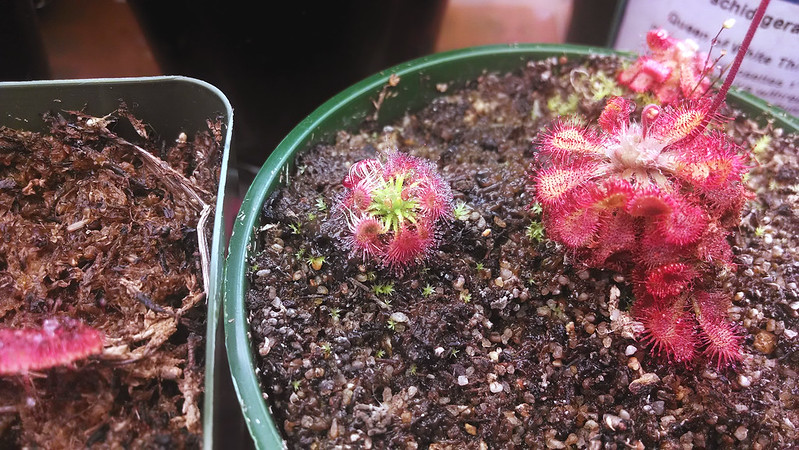 |
| D. allantostigma curling dramatically over food. I am so taken with this sundew. |
The Breakdown
- media: 1:1 peat:sand. I used high-quality (and expensive) peat, so moss growth has been minimal. The bulk product I use now would probably need to be washed extra well or topped with a small layer of sand to keep the moss down
- light: 6 four-foot T-8 bulbs, 16 hrs./day. Like almost all sundews, as much as you can provide is probably best. Most pygmies can be grown outside in appropriate climates
- water: tray works well, has tolerated brief periods with the tray almost dry
- temperature: avoid excessive heat if you want to avoid dormancy. Don't let it freeze either
- feeding: every 2-3 weeks if possible; use pygmy-sized bites
- propagation: no experience so far






No comments:
Post a Comment